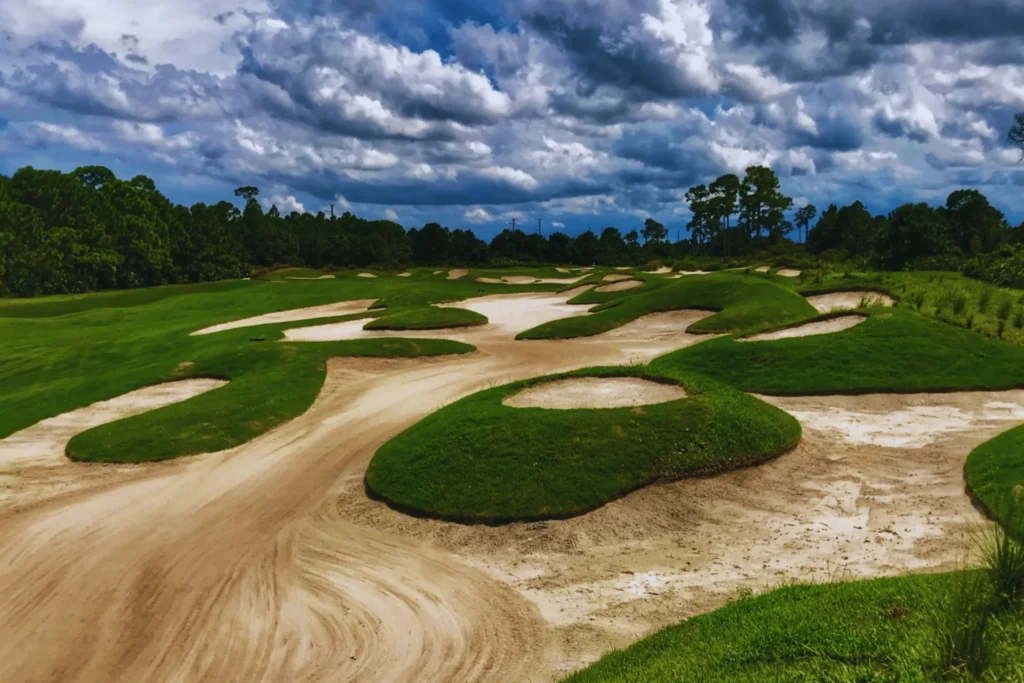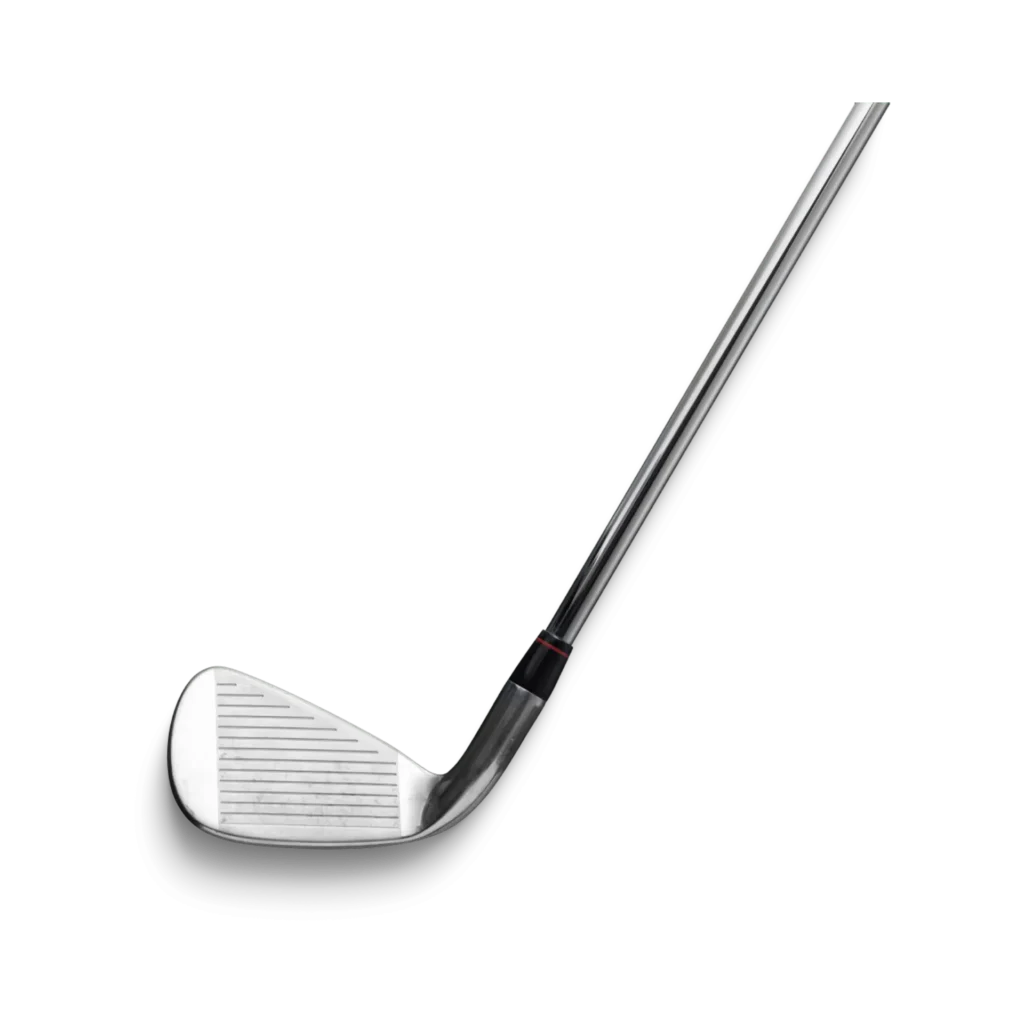Basic golf terms that everyone Golfer should know

Understanding basic golf terms is essential for anyone stepping onto the green. Golf has developed a distinctive vocabulary that can sometimes feel like a language of its own. These terms help in clear communication on the course and also enrich the golfer’s appreciation of the game’s traditions and challenges. From scoring lingo to the names of equipment and course features, familiarizing yourself with these basic expressions is the first step towards full immersion in the world of golf.
Terms related to Golf Course
Tee

Before the first shot on a hole, a tee is a small stand used to hold a golf ball above the ground in the tee box. Tees, which can be made of plastic or wood, are intended to raise the ball to a specific height to maximize the drive’s angle and force. The kind and height of the tee used for the drive might change based on the golfer’s liking and the shot’s particular requirements.
Tee-off
This refers to the actual first shot of each hole, where you use your driver from the tee box.
Drive
Your drive is your first stroke at the beginning of each hole. This will be your longest shot
Fairway

The fairway is the cut grassy area between the tee box and the green. This is where most players aim for their drives.
Green
The green is a small, well-manicured area of grass surrounding the hole. This is where you’ll take your last few shots to complete the hole.
Bunker

A bunker is a sand trap that lines the sides of the fairway or surrounds the green. This dreaded hazard can hinder your progress towards the hole.
Hole: A golf course has eighteen sections, each of which is called a hole. Your final goal is to put the ball in the hole with the fewest amount of strokes possible, as indicated by a flag.
Scoring Terms
Par
This is the number of strokes an expert golfer is expected to make on a hole. Par-3 holes are usually the shortest, Par-4 moderate in length, and Par-5 the longest. It all depends on the distance and obstacles. Par-3 means that the average player should take three shots to complete the hole, Par-4 suggests four shots, and so on.
Birdie
Scoring one stroke under par is a ‘birdie’. For instance, if you get the ball into the hole with two shots on a Par-3, that’s considered a birdie.
Eagle
An eagle is achieved when you score two strokes under par on any given hole. If you manage to complete a Par-4 hole in just two shots, for instance, you’ve earned an eagle.
Bogey
A bogey occurs when you finish a hole one stroke over the expected par. It reflects a slight deviation from the ideal performance, indicating that it took you one extra shot to sink the ball into the hole. For example, completing a Par-4 hole in five shots is considered a bogey. Not as graceful as the birdie or the eagle, but it’s all part of the game, just waiting to be improved upon.
Double Bogey: Like a bogey, this term means two shots over the par for that hole
Triple Bogey: Again, same concept but with three shots
Golf Kit Essentials
Club

The most important tool in your kit is used to strike the ball. You’ll have a range of clubs for different situations on the course. These clubs are of different types like Hybrid, wood, and Iron Golf Clubs
Drivers, Irons, Putters
Clubs are categorized into three primary types. Drivers, or the number 1 wood, are designed for the greatest distance for your first shot on par-4 or par-5 holes. Irons are used for various distances and are identified by numbers ranging from 2 to 9, with the lower numbers generating more distance. Putters come into play on the green where accuracy and control are paramount.
Ball

Not just any ball, but the uniquely designed, dimpled sphere that you’ll be striking across the course. Golf balls come in different brands and target various factors such as distance or spin.
Terms related to Techniques and Strategies
Drive
The drive is your first shot from the tee box. This is the shot that sets the tone for the rest of the hole and demands the greatest distance alongside accuracy.
Putt
A putt is a golf stroke used on the green to roll the ball into the hole. It is the most precise shot in a golfer’s arsenal. It requires a gentle touch and careful aim more than power. Putters, the clubs used for this type of shot, are designed with flat faces to ensure accuracy over short distances. The art of putting demands a deep understanding of the green’s shapes and the ability to judge distances.
Chip
A chip is a short-range shot planned to lift the ball into the air and then allow it to move out toward the hole. It’s most often used when the ball is close to the green but not on it, providing an alternative to putting it through rougher grass. Chipping requires a precise swing with minimal follow-through, aiming to land the ball on the green with enough momentum to reach the hole but not overshoot it. The choice of club for a chip shot depends on the distance to the hole and the player’s strategy.
Terms related to Golf Ball Characteristics
One could argue that the golf ball is the most critical piece of equipment in your arsenal. Understanding the properties of the ball can impact your game.
Compression

The term Golf Ball Compression refers to the amount of deformation a ball undergoes when struck. High-compression balls are less elastic, and intended for players with faster swing speeds. Low compression balls offer more give, making them ideal for slower swingers.
Dimples
Dimples are the small indentations on the surface of a golf ball. These dimples serve to reduce drag and increase lift, allowing for longer and more accurate shots. The number and pattern of dimples can vary depending on the brand and type of ball.
Spin
Spin in golf is twofold—backspin and sidespin. Backspin, when applied correctly, can help a ball “stick” to the green after landing, reducing the chance of a bounce and roll. Sidespin can lead to a hook (exaggerated curve to the left for right-handed golfers) or a slice (to the right) and is a nightmare for accuracy. Understanding how to control spin can be the difference between a birdie and a bogey.
Miscellaneous Golf Terms
Beyond the science of the ball, the golf course itself is a lexicon of hazards and helpers.
Handicap
This refers to a player’s potential or skill level. It is determined by the number of strokes above or below par that a player can be expected to shoot on average.
The term ‘handicap’ is not a limitation in golf but a measure of a player’s ability. The lower the handicap, the better the golfer. Handicaps provide a leveling measure in competitive play by allowing golfers of different abilities to compete fairly against one another.
Caddy

A caddy is a person who carries or pulls a player’s clubs and assists them during their round. Caddies also offer advice, clean clubs, and help read putts. In professional golf, caddies are often highly skilled and knowledgeable about the course and player’s game.
Bunker
A bunker is a hazard on the golf course, usually filled with sand, and designed to swallow up balls with an unfortunate trajectory. Bunkers can pose a challenge, requiring careful consideration and strategy to navigate successfully. A shot from the bunker is known as a ‘sand shot.’
Advanced Golf Terminology
For those progressing in their golfing pursuits, mastery of more nuanced terms will help refine their skill.
Fade

A “fade” is a controlled golf shot where the ball starts on a line left of the target for a right-handed golfer (right for a left-handed golfer) and gently moves back towards the target. This type of shot is desirable for its predictability and control, especially under windy conditions or when navigating obstacles.
Draw
The opposite of a fade, a draw starts right and curves left (for right-handed players). This shot shape is beneficial when the fairway requires a shot to carry farther, or on longer holes.
Slice
A slice is an unintentional curve to the right, prominent in the shots of many beginners. It can be caused by an outside-in swing path or an open clubface at impact and often results in a loss of both distance and accuracy.
Hook
Similar to a draw, a hook curves more aggressively from right to left and can be difficult to control. It might be utilized in certain situations, but generally, it’s not a shot shape that golfers aim to achieve consistently.
Understanding Golf Rules Terminology
Finally, no golf lexicon would be complete without an understanding of the game’s rules.
Penalty Strokes
Penalty strokes are added to a player’s score for rule infractions or accidental violations, such as hitting a ball out of bounds. They serve as a deterrent against cheating and provide a framework for fair play.
Out of Bounds
These are the areas on the golf course from which a player cannot play, whether it’s due to geographic boundaries or specific marking. Out-of-bounds carries a penalty, often with the need to replay the previous shot, resulting in a time and score disadvantage.
Conclusion:
Understanding the language of golf can enhance your experience on the course. Learning more about the details of club selection, ball attributes, advanced shot technique, and rule interpretation will enhance your understanding of the game and help you become a better player.














9 Comments
Pingback: How to Measure Distance on a Golf Course
Pingback: How and Why You Should Use a GPS Golf Watch
Pingback: Best Distance measurement devices in 2024
Pingback: A Guide to Different Types of Golf Courses
Pingback: Golf Balls for Beginners and High Handicappers
Pingback: The Difference between Course Rating and Slope Rating in Golf
Pingback: Comparison of New and Old Golf Balls - High Five Golfers
Pingback: Choosing the Perfect Wedge Loft for You
Pingback: Kirkland Golf Ball Vs Pro V1